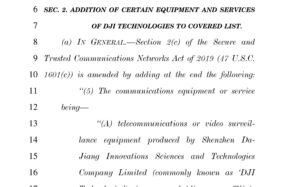We’ve made this much more difficult than we need to.
What was supposed to be a simple FAA announcement of a long awaited addition to the recreational flyer rule has turned into a complicated mess.
And it’s not even the FAA’s fault. It’s ours. And I count myself in that category. If you’re confused by this “simple” announcement, take heart, you’re not alone. Read on for what we hope is a removal of that confusion.
But here is the summary first, in case you don’t want to get into the minutiae. 107 Pilots do not need to take TRUST if they are flying recreationally within the scope of the 107 regulations. They can fly recreationally all day long (& into the night now) as long as they are flying within the confines of the 107 (that’s the important part) without having taken the TRUST. But I encourage you to read on anyway so you understand why, and so you can explain it to others. After all, knowing why you can, and more importantly why you can’t, is just as important as knowing that you can (or can’t).
So, what are we talking about?
The 2018 FAA Reauthorization Act included a carve-out for relaxing the UAS rules for recreational flyers. Since the default set of rules for any UAS flight in the United States Airspace is 14 CFR §107 (Remote Pilot Certificate), and since that is overly burdensome for the vast majority of recreational flights, Congress tasked the FAA to come up with a set of rules that can be used for those who don’t want to fly under 107 rules. Congress wrote some, and left it up to the FAA to write the rest.
Thus was born 49 USC §44809, titled “Exception for limited recreational operations of unmanned aircraft”. In order to fly under recreational rules, and not have to go through the process of taking the Part 107 test, Congress gave the FAA eight (8) separate limitations that must be met in order to fly recreationally. One of those limitations was that anyone wishing to fly recreationally, and outside the limits of Part 107, must take “an aeronautical knowledge and safety test”. And that test was to be developed “in consultation with manufacturers of unmanned aircraft systems, other industry stakeholders, and community-based organizations…”. That last part is important. We’ll explain in a bit.
Thus was born “The Recreational UAS Safety Test (TRUST)”. And thus was born some of the confusion. And it’s not really that confusing if we simply look at the rules.
We’ve made it confusing because we overthink what it says. There are certainly some nuances in the TRUST, but they will be explained in this article down below. For the most part, we’ve simply overthought what the TRUST says. And we really can’t be blamed for doing that either. Congress and the FAA have put out some very confusing and convoluted UAS regulations in the past. So we’ve all been conditioned to digest and analyze every single piece of the regulatory framework that deals with UAS, whether recreational or non-recreational, and deduce what it actually means. So when we finally saw the TRUST, many of use went into overthinking mode. I know I did. And we didn’t need to.
So let’s step back and look at this from a non-overthinking perspective: we have two sets of rules when it comes to flying civil (non-governmental) UAS in the National Airspace System (NAS). First, we have 49 USC §44809 for recreational flyers, second we have 14 CFR §107 for non-recreational flyers. A well known UAS Specialist from the FAA explained it very well to me. He wrote, “Think of it as two completely separate rules (they are). Pick one or the other. 44809 (recreational only and TRUST required). 107 (recreational or commercial and remote pilot certificate required).”
That’s it, pick one and fly accordingly.
So what is confusing about it?
Just a few of things really, and they’re easily explained.
First, why can’t a 107 Pilot just use their 107 to fly recreationally? Simple answer, they can. But the simple answer isn’t always the simplest answer (sort of like that sentence). Yes, a 107 Pilot can use their 107 certificate to fly recreationally. But ONLY as long as they are flying within the confines of the 107 regulations. Just because you’re flying with a 107 in your wallet, doesn’t mean you can’t go out and fly for the pure enjoyment of flight itself. And by definition, pure enjoyment is a recreational flight. 107 Pilots can fly recreationally without a TRUST completion certificate on them. It’s legal. But they MUST follow all of the Part 107 regulations while flying recreationally.
So when would a 107 certificated pilot still need to take the TRUST? Simple answer (again), is when you’re flying outside the confines of 107. Here are some very common examples. Suppose you want to fly a UAS that weighs over 55 lbs (they exist), or if you want to fly recreationally at night and don’t have 3SM strobes attached to your aircraft, or if you’re flying a non-registered <250g recreational drone, or a drone that is registered as a recreational drone. Those are all examples of when a 107 Pilot would need to take and pass TRUST, and carry the completion certificate with them. Once you’re outside 107 regulations, you must fly under 44809, and that means the taking TRUST.
And why doesn’t the 107 count towards the “aeronautical knowledge and safety test” mentioned in 44809? Because it wasn’t developed “in consultation with manufacturers of unmanned aircraft systems, other industry stakeholders, and community-based organizations…”. Words matter when it comes to federal regulations, and the Remote Pilot Certificate process was not developed “in consultation” with stakeholder and CBOs. So your Remote Pilot Certificate does not satisfy the “aeronautical knowledge and safety test” as described in 49 USC §44809. Unfortunately.
And seriously, why the hubbub over taking it anyway?
It’s online, free, easy, and you literally cannot fail. You get a chance to change your incorrect answers to correct answers, and then you “pass” the “test” (it really should be called training instead of test, but Congress used the word “test” in the rule, so the FAA has to use it too). And once you complete the test, all of your personal data is removed from the information packet sent to the FAA. So, if you’re one of those people worried about the gov’t having too much of your information, you can check this off your list of information gathering methods to worry about. That is another complaint we hear. Also, the test administrators must delete all of your personal data from their databases. They can’t keep it either. So you don’t even have to worry about getting more spam in your inbox.
As mentioned, once you complete the “test”, and download and print the certificate, all personal information you supplied to the test administrator is deleted from the system. The only way for LEO to double check if the certificate is legitimate is to check the number on the certificate against the database. And even that will only verify that it’s a legit number.
“But won’t that make it easy to forge?” is a question we’re seeing in some forums. And the short answer is “Yes, it will”. But why would anyone? The FAA certainly isn’t worried about it. It would literally take longer to forge a TRUST certificate than it would to actually take the test in the first place. And since that TRUST certificate is free and no personal info is kept anywhere, where is the impetus for anyone to make a forgery? It’s not monetarily justified, and is an exercise in futility.
So don’t worry, take the test (training). Use the Pilot Institute’s TRUST page (https://trust.pilotinstitute.com/). Greg and company put a lot of effort and money into making their site easy to navigate and simple to use. Take advantage of their hard work to make your work easy.
Oh, one more thing, you only take it once. For life. That’s it. Unless of course you lose your certificate (hint: keep a PDF on your phone). If you lose it, and since the test administrators don’t keep your personal info, you’ll need to take it again. But even that’s no big deal, it’s free after all.
107 or not, take it. Rest easy that you’re covered in virtually any situation you can think of.
__________________________________
Sign up for our newsletter. Consider joining DSPA and help us in our fight to keep the NAS free from unreasonable UAS regulations.
And as alway, fly safe! And have fun!!!!



